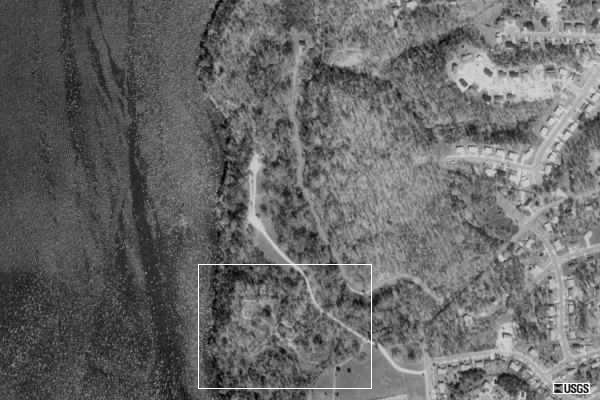
USGS satellite image of the fort
courtesy of Microsoft TerraServer
Proceed to Photo Gallery

During the Civil War 68 forts were built around Washington D.C. Only two were built to defend against a naval attack - Fort Foote and Battery Rodgers. At 16 miles, Fort Washington was considered to far away for adequate support. Battery Rodgers was once located at the end of Jefferson St. in Alexandria, VA. Construction on Fort Foote began in 1861, and was 500 feet long and when completed in 1865. It boasted six 30-pounder Parrott rifles, four 8-inch 200-pounder Parrott rifles, and two 15-inch Rodman Columbiads.
The fort was named after Rear Admiral Andrew H. Foote who was killed during battle in 1863. He was notable for his campaign against Confederate fortifications along the Mississippi River. The fort's garrison lived in frame buildings outside the fort. Travel to and from the fort was almost always done by ferry, as there were no roads leading to the fort's location. Battery Rodgers was named after Fleet Captain G.W. Rodgers who was killed in 1863 in Charleston Harbor, SC.
In 1868 and 1869 the fort was used as a military prison. Major WR King began experimenting with a recoil, or counterpoise carriage with a 15-inch Rodman. But because of the limited use of the Potomac River, he moved his operation to New York in 1871. His invention, the King Carriage became the prototype for the disappearing carriages that were widely used during the Endicott period. The fort was abandoned in 1878.
From 1902 to 1917 the fort was used as a practice area for engineer students. And during World War I it was used for gas service tests. The Officer Candidates School at Fort Washington used Fort Foote as a training ground during World War II. After the war Fort Foote was transferred to the Department of the Interior and eventually became a part of the National Park System.

USGS satellite image of the fort
Proceed to Photo Gallery
